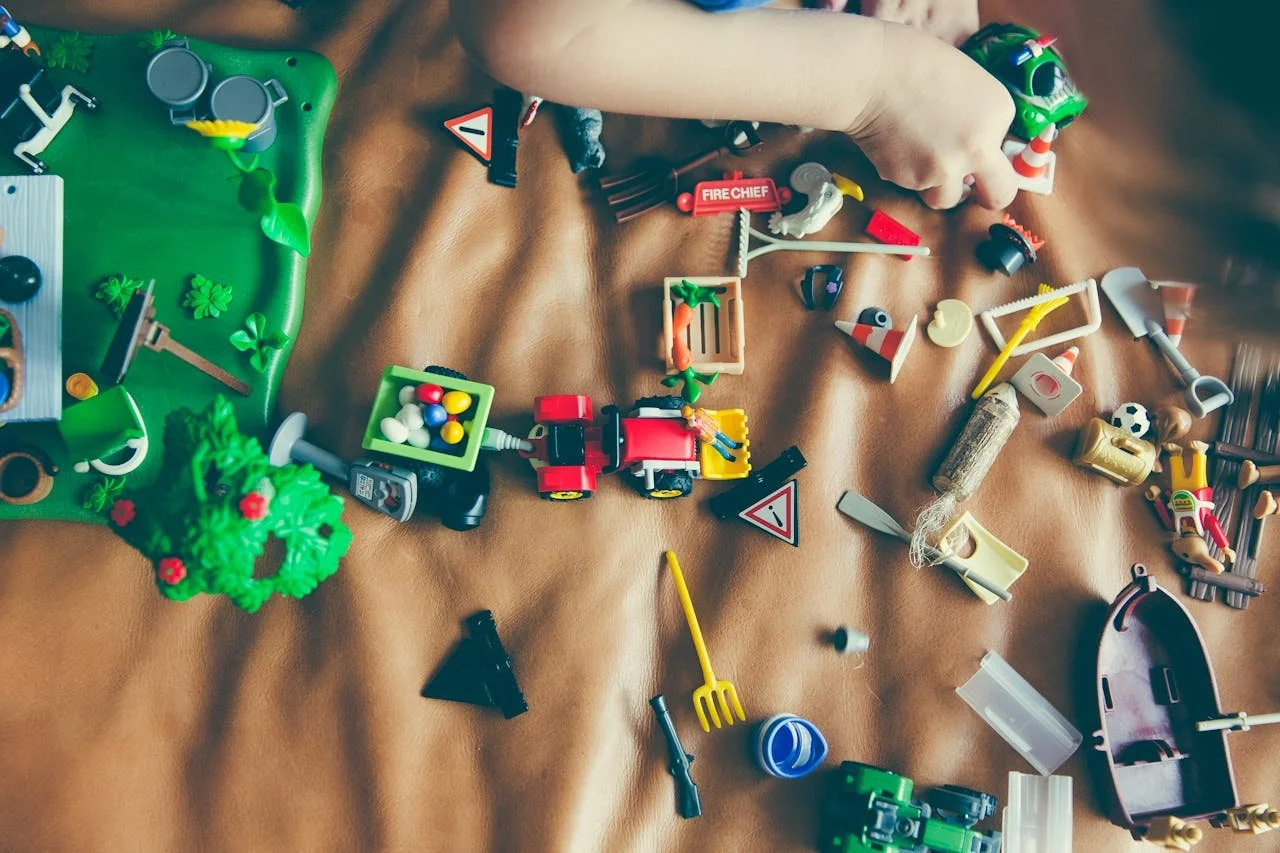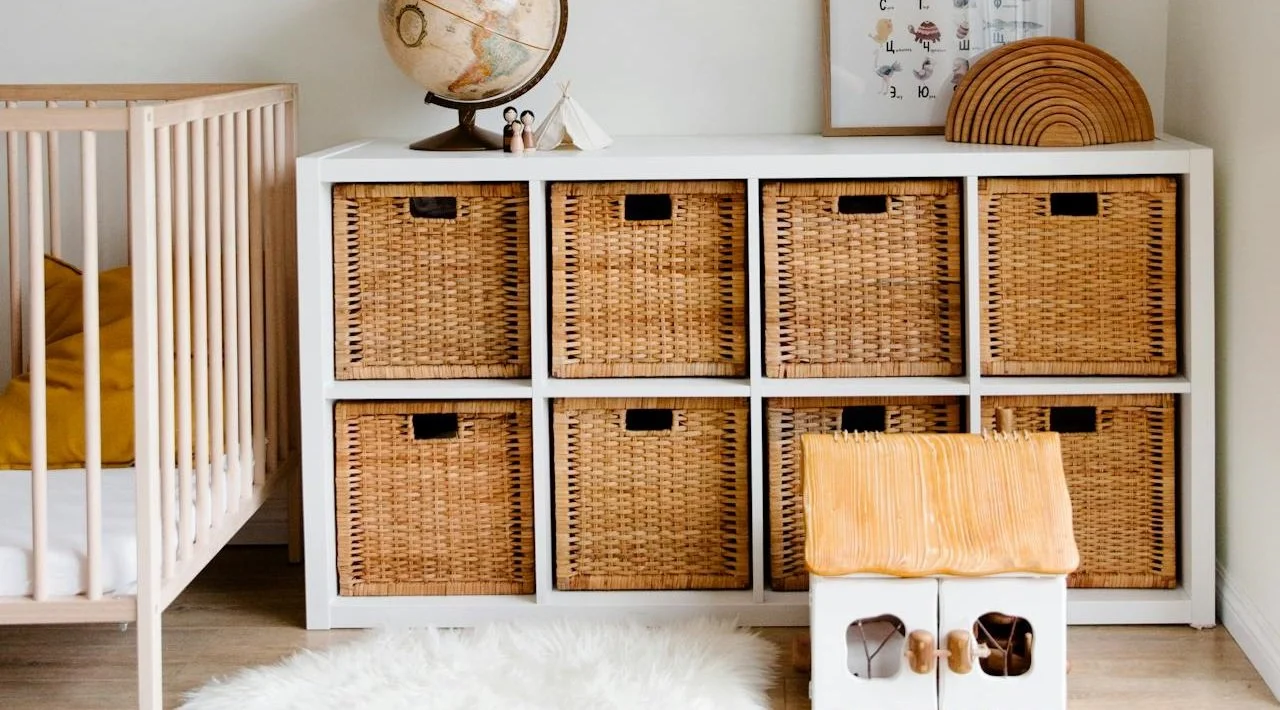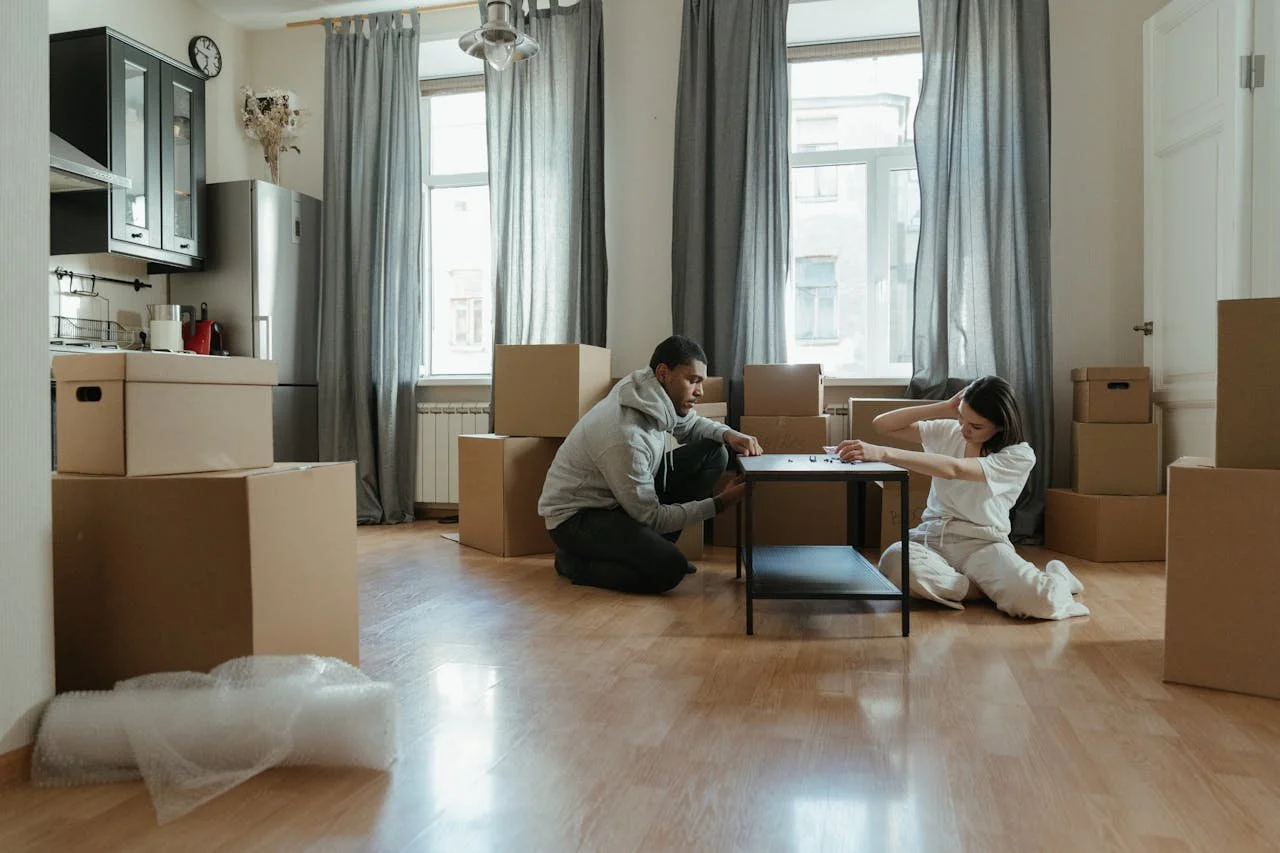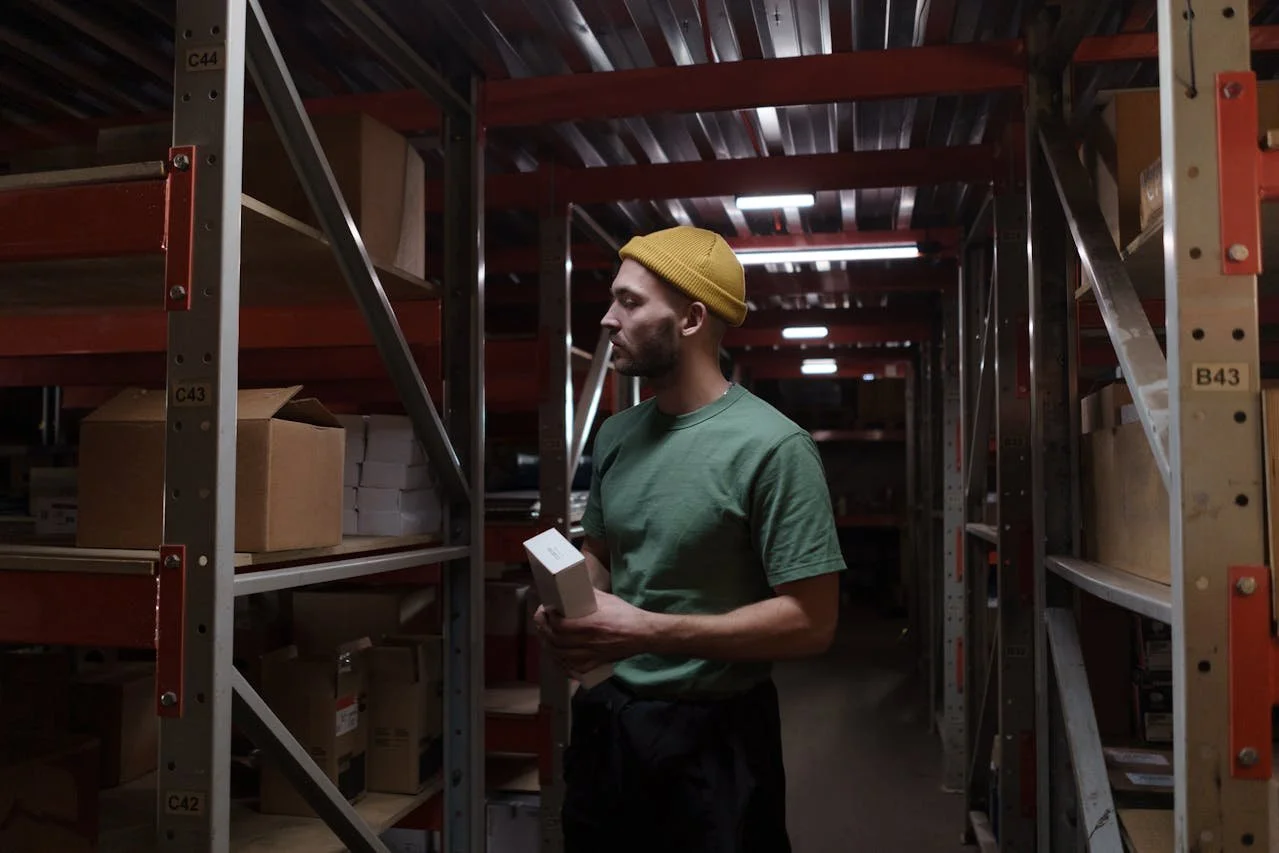
A resource for those seeking information on organizing and transforming spaces.
How to Divide Moving Tasks Between Family Members
Learn how to divide moving tasks between family members with easy steps, teamwork tips, and smart planning for a smooth, happy move.
Moving can be stressful, but it doesn’t have to feel impossible when everyone helps. The key is knowing how to divide moving tasks between family members so each person contributes fairly. When every family member understands their role, the move becomes smoother, quicker, and less chaotic. Whether you live with adults, teenagers, or young children, everyone can play a part in making moving day a success.
Start With a Family Meeting
Before you begin packing, prepare the whole family for the move in advance. Gather everyone for a quick discussion. Talk about the moving date, what needs to be done, and who’s best at certain tasks. Encourage open conversation and allow each person to share their ideas. This step avoids confusion later and builds a sense of teamwork. A shared list or digital calendar can help you stay on track. Use bright colors or stickers to make it fun, especially for kids. When everyone feels heard, they’re more likely to stay motivated.
Create a Moving Task List That Works
To divide moving tasks effectively, write everything down. A written list helps you see the full picture and makes planning easier. Break large chores into smaller, manageable steps. Instead of writing “pack kitchen,” list “wrap glassware,” “box dishes,” and “label pantry items.” Assign tasks based on each person’s strengths. Adults can handle logistics and heavy lifting, while teens organize clothes or electronics. Younger children can sort toys or choose which books to donate. This approach keeps everyone busy, builds responsibility, and speeds things up.
Assign Tasks Based on Age and Strengths
Give everyone a role that fits their abilities. Kids can handle lightweight jobs, teens can manage moderate ones, and adults take on complex or heavier responsibilities. This keeps things safe and fair. If your kids are old enough, they can help you unpack small boxes in their rooms once you move in. That way, they take ownership of their new space and feel proud of helping. Teens might be great at setting up devices or handling pets during the move. When everyone contributes, you’ll be surprised how quickly progress happens.
Keep the Momentum Going With Smart Planning
Long moves can drag on, but visual progress helps maintain your relocation organized. Hang a chart or checklist on the wall. Each time a task is finished, check it off. It’s simple but satisfying. Reward progress with small treats—a snack break, takeout night, or a short movie. These moments keep energy up and spirits high. Also, plan rest times. Fatigue can make mistakes more likely, so schedule pauses for water and food. When everyone stays energized, the process flows better.
Label and Organize Like a Pro
Labeling is an underrated lifesaver. Use color-coded boxes—blue for bedrooms, red for kitchen, green for living room. Write what’s inside each box clearly. This way, everyone knows where to put items without asking. Label boxes by room instead of person, which saves confusion later. You can even number them and keep a quick reference list on your phone. If you need the coffee maker on day one, you’ll know exactly where it is. The organization reduces frustration and keeps things moving smoothly.
Make It Fun for Everyone
When you divide moving tasks, remember that attitude matters. Turn packing into a game. Set a timer and see who can wrap items fastest (without breaking anything). Play music while packing—it keeps the energy light. Create small challenges like “find five items to donate” or “label five boxes in ten minutes.” Kids love games, and it turns chores into fun. Staying positive helps everyone stay calm, even when the to-do list feels long. Moving is emotional, but it’s also exciting. Treat it as the beginning of something new rather than just a big job.
Tackle Moving Day With Confidence
When moving day arrives, have a plan. Assign one person to coordinate—someone who can answer quick questions and make final calls. This avoids confusion about what’s loaded or left behind. Keep the house organized by stages: packed rooms, half-packed rooms, and done rooms. Give children small, safe tasks so they feel involved. Make sure everyone knows the safety plan, especially when movers or trucks are around. Prepare easy snacks, water bottles, and a few portable chargers. These simple things can prevent last-minute stress.
Stay Calm and Handle the Unexpected
Even the best plan can hit bumps. A box might break, a storm might start, or traffic might slow everything down. Try to stay calm and adjust. Pack a “moving essentials” bag with important items to ensure a smooth transition—medications, phone chargers, documents, and a change of clothes. That way, you’re covered no matter what happens. Encourage family members to help each other when small problems arise. A calm, cooperative attitude keeps things moving forward. Remember, no move is perfect, but flexibility makes a big difference.
Unpack Together for a Smooth Start
Once you arrive, unpacking can seem endless. Don’t rush; focus on the most used spaces first—the kitchen, bedrooms, and bathrooms. Assign one person to each space and keep the teamwork going. Adults can handle fragile items, while kids organize their toys or books. Working together keeps energy high and makes the new house feel like home faster. Turn on some music, open the windows, and keep boxes moving until everything finds its place. A few days of teamwork will make your new space feel settled quickly.
Conclusion: Divide Moving Tasks to Move Happily
When you divide moving tasks between family members, you turn a challenging event into a family project. Everyone contributes something valuable. Adults guide, teens organize, and kids participate proudly. It’s more than just efficiency—it’s teamwork in action. By planning, labeling, organizing, and keeping a positive attitude, your family can turn a stressful move into an enjoyable shared experience. Moving teaches patience, cooperation, and flexibility. You’ll not only end up in a new home but also create memories of working together. In the end, every box packed and unpacked with shared effort makes your new start brighter. With balance, laughter, and teamwork, you’ll move forward smoothly—and happily.
5 Essential Tips for a Smooth Relocation with NJ Movers
Moving to a new home is one of those rare moments when anticipation meets reality in the best possible way. You walk through that door for the first time, and suddenly all those weeks of planning actually make sense. This is it – your new chapter.
We partnered with a moving company for this post. The opinions in the post are honest. All reviews and opinions expressed in this post are based on our personal views. We are excited because we know you will love it.
Moving to a new home is one of those rare moments when anticipation meets reality in the best possible way. You walk through that door for the first time, and suddenly all those weeks of planning actually make sense. This is it – your new chapter.
Look, nobody's pretending moving isn't a bit chaotic at first. But with smart planning and reliable movers in NJ who know what they're doing, the whole thing can surprise you with how smoothly it goes. Before you know it, you'll be unpacking that last box and thinking, "Okay, this actually feels like home."
Here are five tips to make your move feel less like surviving a storm and more like a well-orchestrated transition.
#1. Start Early for a Seamless Move in NJ
You know that feeling when your move is three weeks away and you haven't done... anything? Let's avoid that particular brand of panic.
Make a Plan for Your NJ Move
Nothing fancy – just get the basics down. Book your movers, call utilities, and submit that address change. Think meal prep, but for your entire life. Breaking everything into smaller chunks makes it manageable instead of overwhelming, and you'll actually have time to breathe.
Handle the Little Details Early for a Smoother Move
Here's where most people trip up: they nail the big stuff but forget smaller details that can derail your day. Ever tried explaining to a moving truck where to park when there's no designated spot? Or realized you needed to reserve the building's freight elevator?
These aren't earth-shattering problems, but they can turn your smooth moving day into logistical chaos. Get ahead of them, and moving day feels choreographed instead of frantic.
#2. Find the Right Movers in NJ
Picking a moving company can feel like online dating – lots of promising profiles, but who's actually going to show up and treat your stuff right? The difference is that these people are handling everything you own.
Read the Reviews Carefully
Start with Google, Yelp, and the Better Business Bureau. But don't just skim the five-star raves. Three and four-star reviews often tell you more about how companies handle real-world hiccups. Did they own up to mistakes? How did they make it right?
Your friend who moved last year is worth ten online reviews. Ask around – people love sharing their moving stories.
Make Sure Your Movers Are Licensed and Insured
In New Jersey, legitimate moving companies need state licensing – it's not optional. Don't feel awkward asking for proof. Any company worth hiring will gladly show credentials.
Insurance is your backup plan when things get messy. Sometimes stuff breaks or disappears, and you want to know you're covered.
Get Multiple Moving Quotes & Read the Fine Print
Getting three quotes isn't just about price – it's seeing what different companies offer. One might include packing services, and another handles furniture disassembly for free. These perks can be lifesavers when you're knee-deep in moving day.
Watch Out for Transparent Pricing and Clear Moving Contracts
Trustworthy companies talk money like adults – clear, upfront, no mysterious fees. They'll tell you exactly what those extra stairs cost or if there's a charge for long carries. When pricing feels like solving a riddle, run.
#3. Declutter Before Your NJ Move
Think of moving as the universe giving you permission to Marie Kondo your life. Why pay to move stuff you don't actually want? It's like paying for a gym membership you never use, except the gym follows you home.
Tackle one room at a time to avoid decision fatigue. Create your piles: keep, donate, sell, toss. Be ruthless but realistic. That bread maker you haven't touched in two years? Time to let someone else love it. Those college jeans you'll "definitely fit into again"? Maybe it's time for honesty.
Selling valuable items can fund your moving expenses. For everything else, many NJ charities offer pickup services. Consider storage for sentimental items that don't fit your new space – you keep what matters without cramming it into your new home's vibe.
#4. Pack Carefully for an Organized NJ Move
Packing is where good intentions die, but it doesn't have to be a nightmare. The secret isn't working harder – it's working smarter.
Organize by Room and Label Everything
Pack room by room, and label like your future self's sanity depends on it. "Kitchen: plates and bowls" beats "random kitchen stuff" every time. When you're surrounded by boxes, you'll thank yourself for being specific.
Use High-Quality Packing Materials for an NJ Move
Don't cheap out on boxes from behind the liquor store. Invest in decent boxes, quality packing paper, bubble wrap, and good tape. A small investment today keeps you from crying over a shattered favorite mug tomorrow.
Pack Essentials Separately for Your Move
Picture this: you've survived moving day, you're exhausted, and your toothbrush is buried somewhere in identical brown boxes. Cruel, right?
Pack a survival kit with absolute essentials—medications, documents, phone chargers, a change of clothes, and snacks. Think "what would I need if stranded on a desert island, but the island is my new house and I'm too tired to unpack."
Pack Seasonal or Non-Essential Items Early
Christmas decorations in July? Pack them first. Getting non-essentials out of the way early creates space and momentum. Plus, it feels productive when you're still planning.
Consider Professional Packing Services
Sometimes the smartest move is admitting you'd rather leave it to professionals. Packing services aren't just for the wealthy – they're for people who value their time and sanity.
Take White Glove Moving & Storage. After 30 years, they've turned packing into an art form. They know how to wrap your grandmother's china so it arrives intact, and they can pack your entire house while you focus on other things. They'll even help unpack and set up your new place.
#5. Communicate Clearly for a Seamless NJ Move
Good communication turns potential chaos into a smooth operation. It's the difference between movers playing guessing games and everything landing exactly where you want it.
Give Your Movers the Lowdown on Your New Place
Before moving day, paint a picture of what they're walking into. Narrow hallways? Third-floor walk-up? Specific rooms for items? The more details you provide upfront, the smoother everything goes.
Highlight Special Handling Instructions
That antique dresser or vinyl collection deserves special attention. Don't assume your movers are mind readers – tell them what needs extra care and why it matters. If you're unsure about protecting something fragile, ask for their expert opinion. Good movers have seen it all and can offer solutions you might not have considered.
Stay available on moving day for inevitable small decisions. Flexibility paired with clear communication is your recipe for success.
Our Seamless Move Starts with Planning and the Right Help
Moving doesn't have to be a disaster movie. With solid planning, the right team, and these five strategies, you can actually enjoy starting fresh somewhere new.
The key is finding movers who treat your move like it matters – because it does. This isn't just about getting stuff from Point A to Point B. It's about transitioning your life, and that deserves care and professionalism.
Moving Questions About NJ Movers
Will movers help with my garage or basement?
Absolutely. Most movers tackle any part of your home, including often-forgotten spaces. Just give them a heads up about what they'll find.
What happens if the weather turns nasty on moving day?
NJ movers have seen every kind of weather. They'll take extra precautions to protect your belongings and keep things moving, even when Mother Nature throws a tantrum.
Can movers help with storage if my new place isn't ready?
Many moving companies offer storage solutions for exactly this situation. Your stuff stays safe until you're ready to complete the move.
How do I handle an out-of-state move?
Interstate moves are different beasts with extra regulations and logistics. Choose a mover with solid long-distance experience – they'll navigate the complexities for you.
What if I need multiple stops during my move?
Let your movers know ahead of time, and they'll map out the most efficient route. Communication is key – the more they know, the better they can accommodate.
What if I need to move on short notice?
Life happens fast sometimes. Reach out as soon as you know, be flexible with timing if possible, and many companies can work with tight deadlines
How Storage Unit Design Shapes Organization Habits
Discover how storage unit design shapes daily organization, reduces stress, and helps you create lasting order in every part of life.
Staying organized often feels easier when your environment supports you. A well-arranged space reduces stress and saves time. This connection becomes clear when you consider how storage unit design influences your daily routines. The way a space is arranged changes how often you return items, how quickly you find them, and how consistently you maintain order. By looking at how physical structures affect personal habits, you can see why design matters more than simple storage capacity.
The Psychology of Organized Spaces
Your environment influences your choices more than you realize. A cluttered space creates distraction and makes it harder to focus. A clean, structured space encourages better decisions and motivates you to keep habits consistent.
Importantly, the brain responds to order by reducing stress hormones. When your surroundings feel tidy, you act with greater focus. By contrast, clutter makes even small tasks feel overwhelming. That isn’t only about how the space looks; it’s about how it works on a practical level.
When you step into an orderly environment, you know what to expect. That predictability strengthens your ability to repeat small routines. Whether you’re at home or managing a storage area, the setup influences the outcome.
Small Details That Drive Big Changes
Minor features often determine how well you maintain structure. Lighting is a clear example. A dark corner discourages use, while a well-lit area invites activity. Better visibility encourages you to use every part of a space effectively.
Labels are another small feature that brings large benefits. A clear label reduces hesitation and speeds up the process of returning or finding items. Without labels, you waste time checking boxes or guessing their contents.
Adjustable shelving also makes a difference. Your needs change over time, and flexible shelves adapt with you. Instead of leaving items stacked randomly, you create a room that fits your current situation. These details may appear small, but they support long-term organizational behavior.
Habits Built Through Consistency
Habits don’t form overnight. Repetition builds them. Returning items to the same location every time makes organizing automatic. Over weeks and months, that repetition creates lasting patterns.
Consistency is easier when the design supports it. A well-planned space encourages you to repeat small actions. If returning an item requires effort, you’ll skip it. If it takes seconds, you’ll do it without thinking. That’s how routines stick.
One detail matters here: storage unit design. When you prioritize layout, organization feels natural instead of forced. Habits become easier to repeat, and maintaining order requires less energy.
There are also moments in life where habits face stress, such as during a move. Packing and unpacking can feel overwhelming, but using storage solutions for a smooth relocation makes the process easier. They help you keep things organized while relocating and reduce the chance of losing track of belongings. A structure that supports you through change reinforces habits rather than breaking them.
Storage Unit Design and Your Daily Habits
The physical layout of a unit strongly affects how you use it. Poorly arranged spaces discourage consistent organization. A well-planned setup makes routines easier to follow. That is why storage unit design connects directly to your daily habits.
When items you need every day are at eye level, you grab them quickly and put them back without delay. If those same items are buried behind heavy boxes, you avoid using them. That avoidance turns into clutter over time.
Separating seasonal items from daily necessities helps too. A section for winter gear that doesn’t interfere with summer essentials means smoother transitions between seasons. Small shifts in layout encourage consistent patterns that stick with you.
Practical Layouts That Encourage Efficiency
A practical layout saves you from frustration. Vertical storage helps maximize space and keeps items accessible. Using wall-mounted shelves or tall racks reduces wasted floor area. You gain order without expanding square footage.
Grouping items by category also makes retrieval simple. Tools together, clothes together, and sports gear in one zone. This arrangement ensures you know exactly where to return things. Without grouping, items drift into random piles, creating disorder.
Maintaining a clear pathway is just as important. If you can’t walk through the space without moving objects, frustration builds quickly. A path makes every area accessible, so you’re more likely to use the entire space instead of ignoring harder-to-reach corners.
Digital Tools That Complement Physical Storage
Physical design works best when paired with simple tech support. Apps help you keep track of stored items by listing their location. You don’t waste time guessing what’s inside a box.
QR codes provide another solution. Attach one to a container, and you scan it to see the contents. This system reduces errors and ensures you find what you need quickly.
These digital methods remove unnecessary stress. Instead of opening every box, you check your phone. That consistency encourages you to return items properly since you know the effort will save time later.
At the same time, cloud storage links can improve access. You can create shared inventories that family members or coworkers update in real time. This way, everyone knows where items are, which reduces confusion and duplicate searches.
Voice assistants also help. By syncing your inventory with smart speakers, you can ask for item locations without lifting a finger. That turns your storage system into something interactive and easy to update.
Finally, reminders built into apps ensure you don’t forget seasonal rotations or overdue clean-ups. With alerts, you know when to swap out clothing, rotate tools, or re-check supplies. As a result, the organization remains consistent without requiring constant attention.
Closing Insights on Organized Living
Staying organized depends on consistent behavior, but behavior often depends on the setup of your space. Small features, practical layouts, and even digital tools all play a role. By creating an environment that supports easy choices, you reduce stress and save time. In the end, storage unit design is more than an arrangement of shelves and boxes. It shapes your daily actions, influences how you interact with your space, and makes habits easier to sustain. With a well-planned design, order becomes part of your routine, and staying organized feels effortless.
Why Hiring Local Movers in Tucson Saves You Time and Money
Moving is rarely easy, and for residents of Tucson, the process can come with unique challenges. From navigating the city’s sprawling neighborhoods to dealing with the summer heat, planning a move requires careful consideration. One of the smartest decisions homeowners and renters can make is hiring local movers. Not only does it simplify logistics, but it can also save significant time and money, making the transition smoother and less stressful.
We partnered with a moving company for this post. The opinions in the post are honest. All reviews and opinions expressed in this post are based on our personal views. We are excited because we know you will love it.
Moving is rarely easy, and for residents of Tucson, the process can come with unique challenges. From navigating the city’s sprawling neighborhoods to dealing with the summer heat, planning a move requires careful consideration. One of the smartest decisions homeowners and renters can make is hiring local movers. Not only does it simplify logistics, but it can also save significant time and money, making the transition smoother and less stressful.
Familiarity with Tucson Neighborhoods
One of the biggest advantages of hiring local movers is their intimate knowledge of Tucson neighborhoods. Local moving companies are familiar with the city’s layout, traffic patterns, and construction zones. This knowledge allows them to choose the fastest, most efficient routes between homes, reducing travel time and the likelihood of delays.
Additionally, local movers know the quirks of Tucson’s residential areas. From apartment complexes with tight loading zones to gated communities with specific entry requirements, professional local movers can navigate these challenges with ease. This expertise ensures that the moving process is smoother, faster, and less stressful for everyone involved.
Efficient Scheduling and Flexibility
Hiring a local moving company also brings scheduling benefits. Because the movers are nearby, they can often accommodate last-minute schedule changes or adjust their timing to fit your needs. Unlike long-distance moves, where every hour on the road adds cost and limits flexibility, a local move allows for more precise scheduling.
Shorter travel distances mean more time is spent actually moving belongings rather than driving between locations. Movers can complete more tasks in a single day, reducing labor hours and ultimately lowering the overall cost of the move. This efficiency is especially valuable for families balancing busy schedules or for anyone trying to move quickly between leases or homes.
Cost Advantages
Cost is one of the most compelling reasons to hire local movers in Tucson. Long-distance moves typically come with extra fees such as travel surcharges, fuel costs, and insurance for extended routes. With a local move, these expenses are minimized or eliminated entirely.
Beyond savings on travel, hiring professional movers can be more economical than attempting a DIY move. Renting a moving truck, buying packing supplies, and paying for fuel can quickly add up. Additionally, inexperienced movers risk damaging furniture or property, which can lead to unexpected repair or replacement costs. Professional local movers bring both experience and equipment, reducing these risks and often saving homeowners money in the process.
Experience with Tucson-Specific Moving Challenges
Tucson’s climate and urban landscape present challenges that local movers are uniquely equipped to handle. The desert heat, especially in the summer months, can pose risks to both movers and belongings. Experienced local movers know how to schedule moves to avoid the hottest parts of the day and take precautions to protect items from heat damage.
The city’s streets and older neighborhoods also require skillful navigation. Narrow roads, steep driveways, and limited parking spaces can make a move difficult for those unfamiliar with the area. Local movers understand these obstacles and have strategies to maneuver efficiently. They are also familiar with any local regulations or homeowner association rules that may impact the move, ensuring a smoother process from start to finish.
Safety and Reduced Risk of Damage
Moving involves heavy lifting, careful packing, and transport, all of which carry the risk of damage to belongings. Hiring local movers minimizes these risks. Their familiarity with Tucson homes—whether modern houses with tile floors or older adobe structures—allows them to handle items safely and efficiently.
Shorter travel distances also mean less time for items to shift or sustain damage. Professional movers use specialized equipment, padding, and packing techniques to secure furniture, appliances, and fragile items. This level of care not only protects your possessions but also reduces stress during the move.
Personalized Service and Community Trust
Local movers often provide a more personalized experience than national chains. Because they rely on community reputation, they are motivated to deliver excellent service. This can mean a more hands-on approach, with movers taking the time to understand your specific needs and adapt their methods accordingly.
Communication is simpler, too. Being nearby allows for quicker responses to questions or concerns, and any issues can often be resolved on the spot. Local movers are invested in maintaining a good relationship within the community, which often translates into higher levels of professionalism and care.
Conclusion
Moving in Tucson doesn’t have to be overwhelming. By hiring local movers, homeowners and renters gain several key advantages: familiarity with neighborhoods, efficient scheduling, cost savings, experience with local challenges, reduced risk of damage, and personalized service. These factors combine to save time, reduce stress, and protect both your belongings and your wallet.
In a city where moving can present unique logistical and environmental challenges, choosing a trusted local moving company is often the smartest decision a homeowner or renter can make. Not only does it make the move smoother, but it also ensures that your property and possessions arrive safely and efficiently—giving you more time to settle into your new home.









